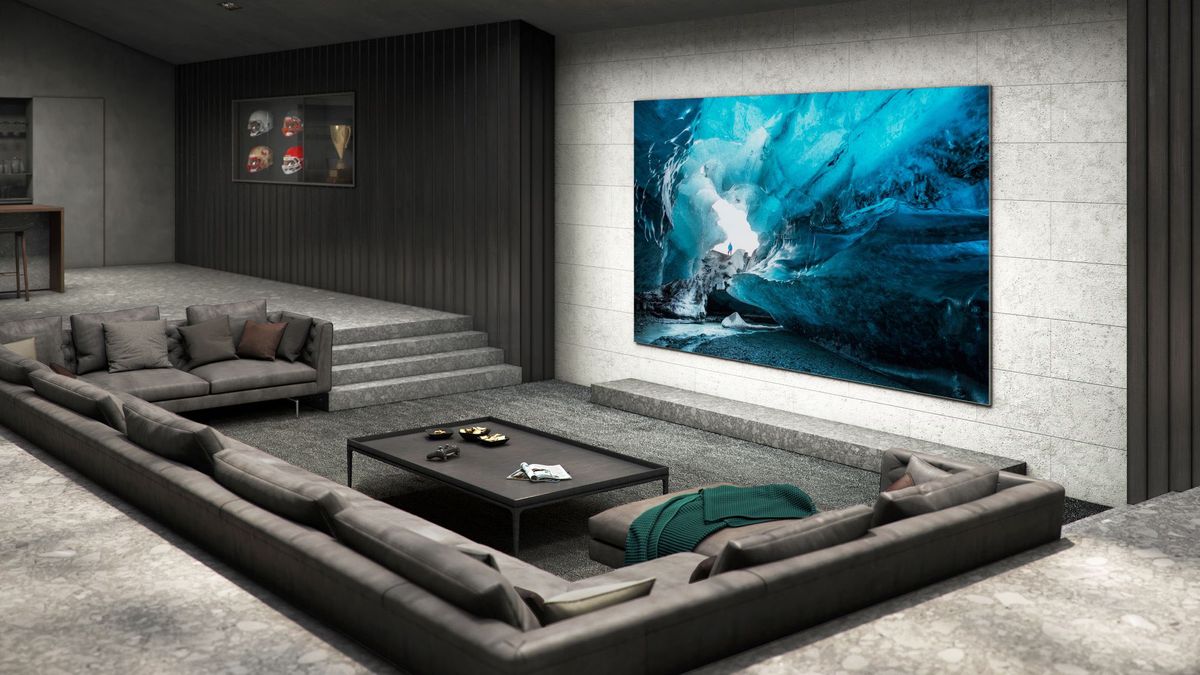
When we heard that Samsung was planning on making smaller MicroLED TVs for 2022, we hoped that maybe the cutting-edge display technology would start to approach a more reasonable price.
Nope. Not going to happen.
According to a new report from South Korean tech site The Elec, Samsung’s smallest 89-inch MicroLED model is expected to retail for $80,000 (around £59,500 or AU$113,500) while the larger 114-inch model will come in at a cool $100,000 (approximately £74,5000, AU$142,000).
Samsung has yet to confirm those prices to US tech publications, however, (that's something that usually happens around March or April before the TVs come out). So, there could be some wiggle room there. Still, even if the South Korean tech site is off by a couple grand, the MicroLED TVs are still going to be 30-to-40 times more expensive than the company’s flagship QLED, the Samsung QN900B 8K Neo QLED TV. So yeah, we’ll be sticking with mini-LED for now.
Analysis: Why are MicroLED TVs so much more expensive?
Despite having similar-sounding names, there is a substantial difference between mini-LED TVs and MicroLED TVs.
Mini-LED TVs use LEDs that are about one-fifth the size of those found in a normal LED TV and can pack their screens with hundreds of contrast control zones to independently turn on and off certain sections of the TV.
MicroLED TVs? They’re about one-one hundredth of the size of a traditional LED and they’re self-emissive like OLED. Each of those millions of LEDs can be controlled individually - allowing you to get the best levels of contrast and brightness.
Get daily insight, inspiration and deals in your inbox
Sign up for breaking news, reviews, opinion, top tech deals, and more.
While that technology currently costs the moon, given the size of these screens and the technology driving them, we’re hoping to get a taste of it with the new QD-OLED TVs that were announced back at CES 2022. These screens, like the Sony A95K QD-OLED, combine the self-emissive organic light-emitting diodes that give OLED its perfect black levels with the color saturation of quantum dots.
The result is a screen that has 200% of the color saturation of a traditional LED-LCD screen, with higher peak brightness and wider viewing angles than an OLED.
Unfortunately even QD-OLED won’t have the peak brightness or color saturation of MicroLED - but at a fraction of the price, they’re our best bet for improved picture quality without mortgaging our homes.
Via What Hi-Fi?
- These are the best TVs currently available in 2022
Nick Pino is Managing Editor, TV and AV for TechRadar's sister site, Tom's Guide. Previously, he was the Senior Editor of Home Entertainment at TechRadar, covering TVs, headphones, speakers, video games, VR and streaming devices. He's also written for GamesRadar+, Official Xbox Magazine, PC Gamer and other outlets over the last decade, and he has a degree in computer science he's not using if anyone wants it.
